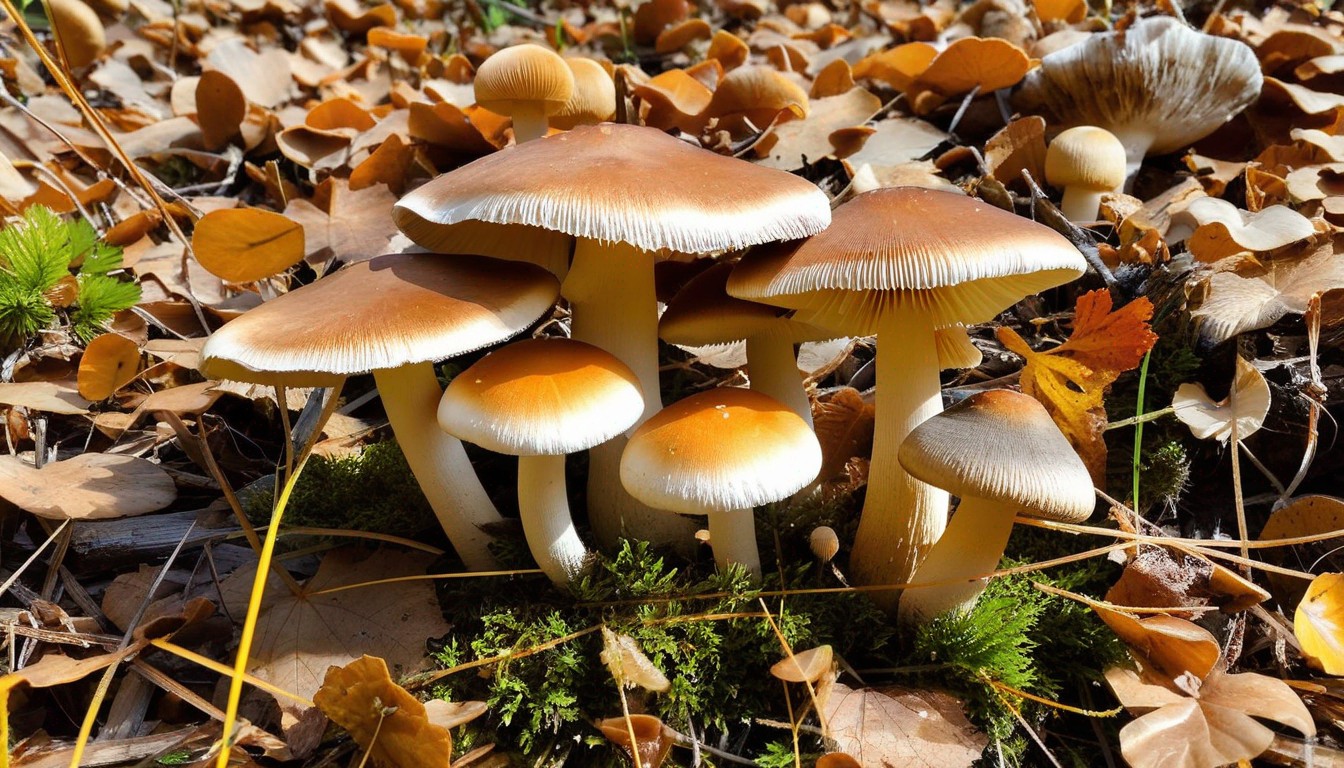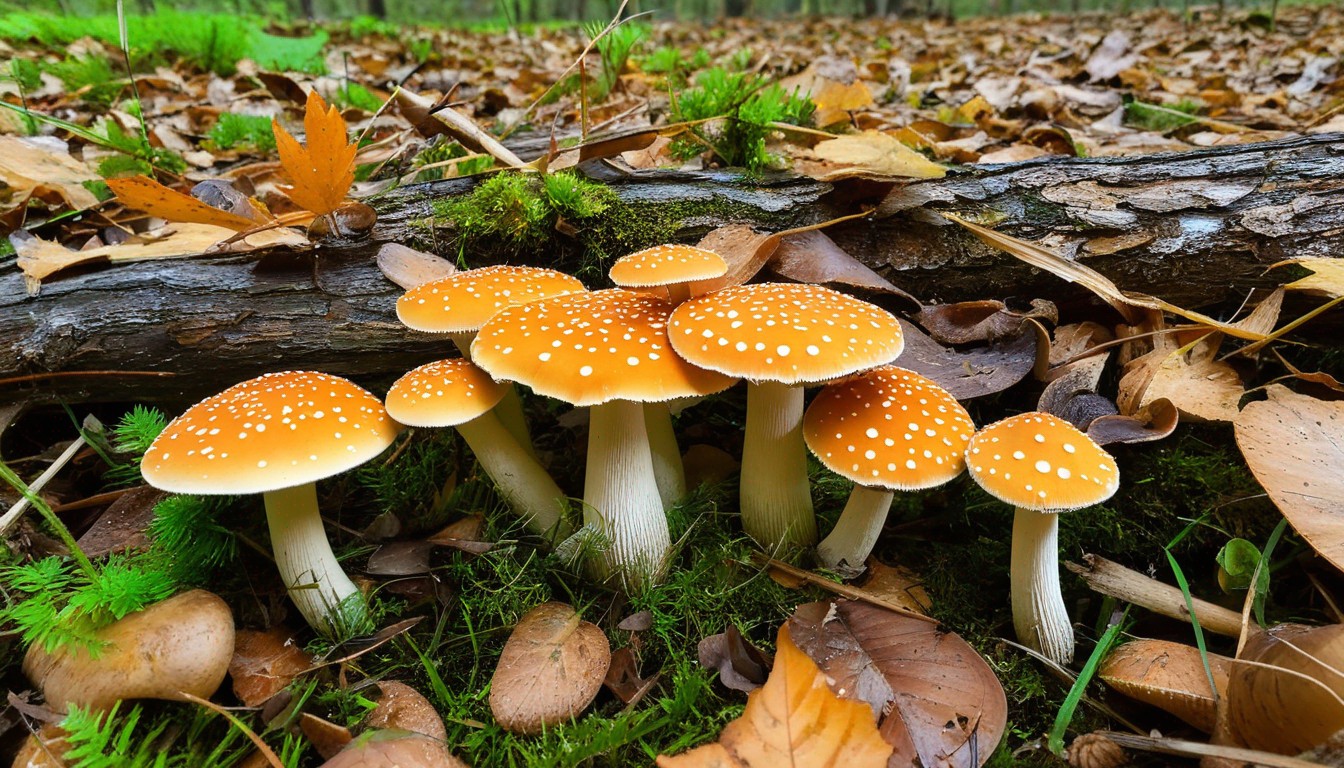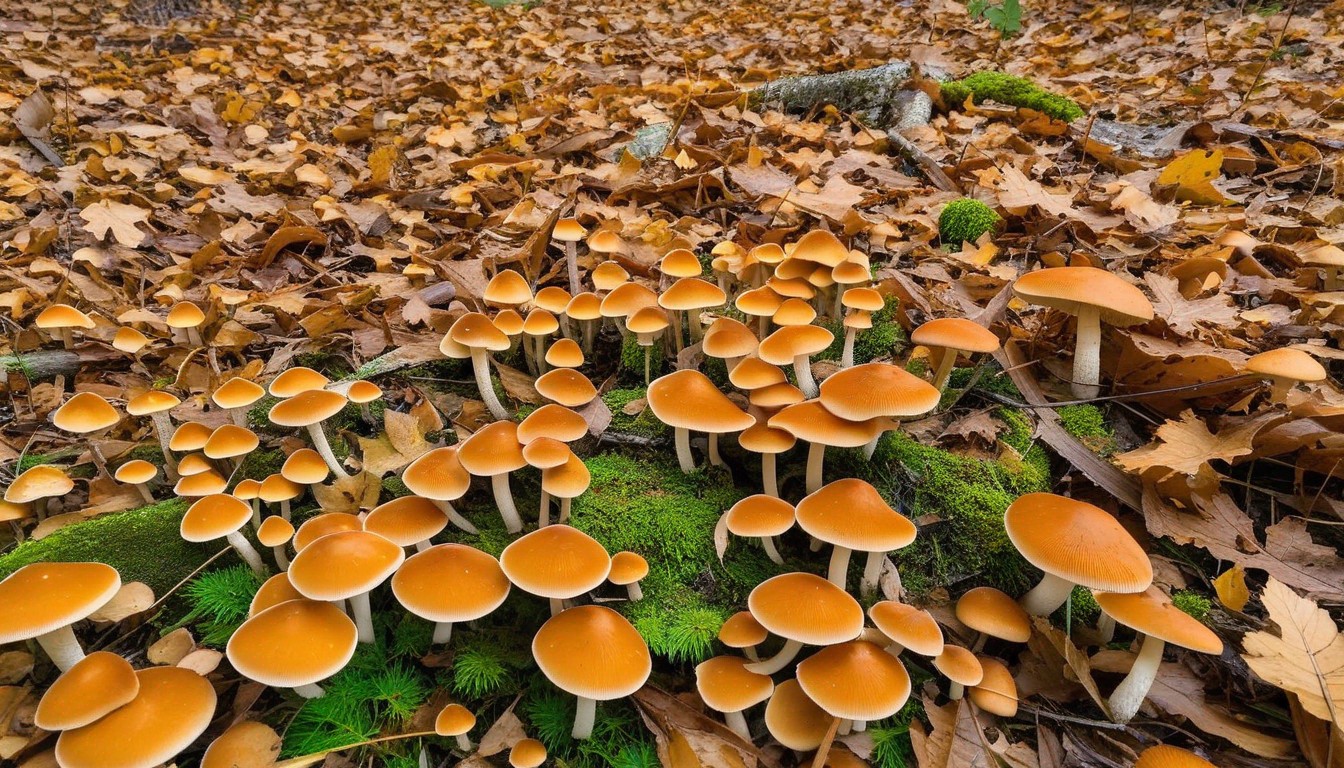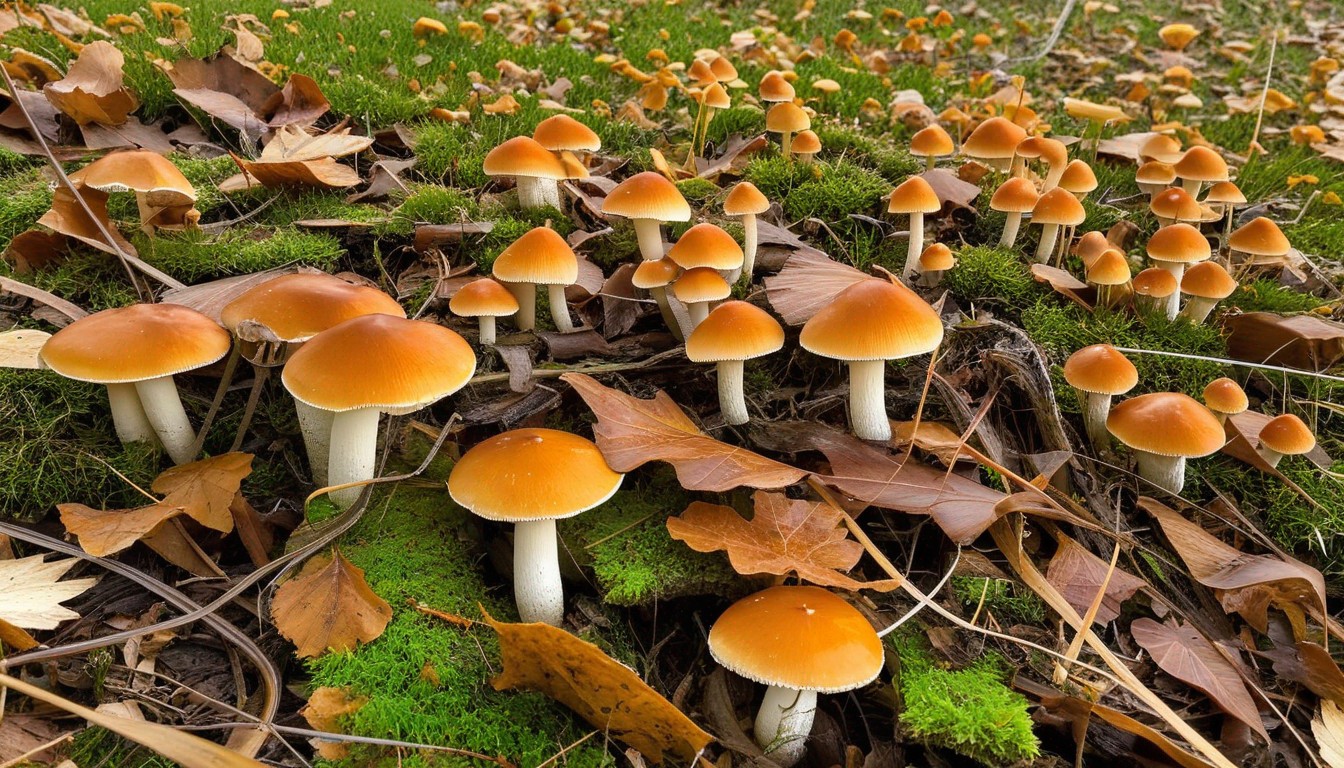Welcome to our comprehensive guide to Missouri Fall Mushrooms. If you’re a foraging enthusiast, a nature lover, or simply someone who enjoys discovering new seasonal treasures, you’re in the right place. In this guide, we’ll take you on a journey through Missouri’s mushroom season, exploring the most common mushroom species, teaching you to identify them, and providing insights into their medicinal and culinary properties. Whether you’re a seasoned mushroom hunter or a beginner who’s just starting to explore the world of fungi, this guide will equip you with all the knowledge and inspiration you need to make the most of Missouri’s fall mushrooms.
Key Takeaways
- Missouri’s fall mushroom season is a treasure trove of natural wonders waiting to be discovered.
- By learning how to identify Missouri fall mushrooms, you can safely enjoy their unique culinary and medicinal properties.
- Conservation and preservation efforts are crucial to maintaining healthy ecosystems and protecting these natural treasures for future generations.
- Photography is an excellent way to capture the beauty of Missouri fall mushrooms and share it with others.
- From soups and stews to omelets and beyond, Missouri fall mushrooms can add a delicious and nutritious twist to a variety of dishes.
Understanding Missouri’s Mushroom Season
Missouri’s mushroom season is a delightful time for foragers and nature enthusiasts alike. Running from late summer through early winter, the season provides the perfect conditions for mushrooms to grow in abundance.
The exact timing of the season varies from year to year and can be affected by several factors, including precipitation, temperature, and humidity. Typically, the season runs from August to November, with peak mushroom growth occurring in September and October.
Environmental Factors
The unique geography of Missouri plays a crucial role in the growth of mushrooms during the fall season. The state’s diverse landscape, with its numerous forests, grasslands, and wetlands, provides the perfect environment for a wide variety of mushroom species to thrive.
Furthermore, the seasonal changes in temperature and humidity create the ideal conditions for the growth and proliferation of mushrooms. The cooler temperatures and increased moisture levels in the fall provide a perfect breeding ground for these fungi, resulting in a bountiful mushroom harvest.
The Role of Mycology
Mushroom hunting in Missouri has grown in popularity in recent years, with more and more people taking an interest in foraging for these natural delicacies. As a result, the study of mushrooms, or mycology, has become increasingly important in the state.
Mycologists study the various species of mushrooms and their ecological significance to better understand their growth patterns, habitats, and potential uses. This research is vital to the conservation and preservation of these fungi, as well as to the safety of individuals who forage for mushrooms.
Mushroom Hunting Tips
Foragers should always take caution when hunting for mushrooms, as some species can be poisonous. It is crucial to be able to identify the different types of mushrooms in the wild before consuming them.
One effective way to ensure the safety of mushroom hunters is to join a local mycology society. These groups provide valuable resources for identifying and learning about the various species of mushrooms found in Missouri, as well as tips for safe foraging practices.
By understanding the unique characteristics of Missouri’s fall mushroom season, enthusiasts can safely and responsibly enjoy the bounty of these natural wonders.
Popular Mushroom Species in Missouri

Different mushroom species can be found in Missouri during the fall season. These species have unique characteristics and can be easily identified by their physical features. Here are some of the most popular mushroom species in Missouri:
|
Mushroom Species |
Distinguishing Features |
Habitat |
Culinary Uses |
|---|---|---|---|
|
Chanterelle (Cantharellus cibarius) |
Yellow to orange cap with wrinkles; gill-like ridges; fruity aroma |
Deciduous forests, mossy areas, and near water sources |
Used in sauces, soups, and sautés; pairs well with poultry and seafood |
|
Hen of the Woods (Grifola frondosa) |
Large, fan-shaped caps with overlapping layers; white to light brown; no gills |
Base of oak or maple trees, in deep leaf litter |
Tender, nutty flavor; good for stir-fries, soups, and stews |
|
Black Trumpet (Craterellus cornucopioides) |
Trumpet-shaped with a black to gray-brown cap; small ridges instead of gills |
Deciduous and coniferous forests, often near dead trees or stumps |
Used in sauces, sautés, and risottos; pairs well with chicken and pasta dishes |
|
Chicken of the Woods (Laetiporus sulphureus) |
Bright yellow to orange with overlapping, fan-shaped caps; no gills |
Base of oak, cherry, and other hardwood trees; grows in large clusters |
Firm and meaty texture with a slightly sour, lemony taste; good for vegetarian dishes and stir-fries |
It is important to note that while these mushroom species are popular and widely foraged, proper identification is crucial before consuming any wild mushroom. Some mushrooms can be toxic or inedible, and misidentification can lead to serious health risks.
Identifying Missouri Fall Mushrooms
When it comes to identifying Missouri fall mushrooms, there are several key characteristics to look out for. These include:
- Color: Pay attention to the color of the mushroom cap, stem, and gills. This can vary widely and can be an important factor in identification.
- Shape: Note the shape of the cap and stem. Mushrooms can range from flat and wide to tall and slender.
- Texture: Observe the texture of the mushroom cap and stem. This can range from smooth to rough and can be an important identifying factor.
- Gills: Look at the structure of the gills underneath the cap. The color and pattern of the gills can also be a crucial identifying feature.
- Spores: Take note of the color of the mushroom spores. This can sometimes be seen on the gills or by using a spore print.
It is important to note that not all mushrooms are safe to eat, and some can be poisonous or even deadly if consumed. Therefore, it is crucial to exercise caution when identifying mushrooms and to always double-check identification with a trusted source.
“When in doubt, throw it out.”
If you are new to mushroom identification or are unsure about a particular species, it may be helpful to attend a workshop or foraging group led by experienced mycologists.
In addition to these identification tips, it is essential to follow safety precautions when foraging for mushrooms. Always wear gloves and use a knife to cut the mushrooms at the base of the stem, leaving the roots intact. Avoid collecting mushrooms that are growing near roadsides or in contaminated areas.
Edible Missouri Fall Mushrooms

Missouri fall mushrooms are not only beautiful but also delicious. In this section, we will focus on the edible mushroom species that can be found in Missouri during the fall season. Below are some of the most popular edible Missouri fall mushrooms and how they can be used in cooking.
Chanterelle Mushroom
The Chanterelle mushroom is a favorite among foragers and chefs for its unique and delicate flavor. This mushroom can be found in wooded areas and is easily recognizable by its golden or yellow color and trumpet-like shape. Chanterelles make a great addition to soups, sauces, pasta dishes, and can even be used in desserts.
Hen of the Woods Mushroom
The Hen of the Woods mushroom, also known as maitake, is a meaty and flavorful mushroom that grows in clusters at the base of trees. The mushroom has a rich umami flavor and can be used in a variety of dishes, including stir-fries, risottos, and stews.
Oyster Mushroom
The Oyster mushroom is named for its resemblance to an oyster shell and has a subtle, mild flavor. This mushroom can be found on dead and dying trees and can be used in stir-fries, soups, and sauces. Oyster mushrooms are also a popular choice for vegetarian and vegan dishes because of their meaty texture and umami flavor.
Morel Mushroom
The Morel mushroom is a prized delicacy that is highly sought after by mushroom hunters. These mushrooms are cone-shaped with a honeycomb-like texture and have a nutty, meaty flavor. Morels can be used in a variety of dishes, including sautés, sauces, and soups.
Medicinal Properties of Missouri Fall Mushrooms
While many people enjoy the flavors of Missouri fall mushrooms, few are aware of their potential health benefits. From immune support to anti-inflammatory properties, these mushrooms have been used in traditional medicine for centuries. In this section, we will explore the medicinal properties of Missouri fall mushrooms and their potential applications in modern medicine.
Immunity Boosting
One of the most significant benefits of Missouri fall mushrooms is their ability to enhance the immune system. Specifically, mushrooms such as the reishi and turkey tail contain beta-glucans that activate various immune cells, including natural killer cells and macrophages. These cells play a crucial role in identifying and destroying harmful pathogens in the body.
Research has shown that consuming Missouri fall mushrooms can increase the production of these immune cells, leading to a stronger and more robust immune system. Additionally, these mushrooms may have anti-tumor properties, making them a potential complementary treatment option for cancer patients.
Anti-Inflammatory
Another benefit of Missouri fall mushrooms is their anti-inflammatory properties. Inflammation is a natural response by the immune system to protect the body against injury and infection. However, chronic inflammation can lead to a range of health problems, including heart disease and arthritis.
Studies have shown that Missouri fall mushrooms, such as lion’s mane and chaga, contain compounds that can reduce inflammation in the body. These compounds, including polysaccharides and triterpenes, can inhibit the production of pro-inflammatory cytokines, leading to a reduction in inflammation.
Other Potential Benefits
In addition to their immune-boosting and anti-inflammatory properties, Missouri fall mushrooms have been studied for a range of other potential health benefits. For example, lion’s mane mushrooms contain compounds that may enhance cognitive function and protect against neurodegenerative diseases such as Alzheimer’s and Parkinson’s.
Similarly, the turkey tail mushroom has been shown to have antiviral properties, making it a potential treatment option for viral infections such as the common cold or flu.
Safety Precautions
While Missouri fall mushrooms can offer a range of potential health benefits, it’s important to note that not all species are safe for consumption. Some mushrooms can be toxic or cause adverse reactions in certain individuals.
Before consuming any Missouri fall mushrooms, it’s essential to properly identify them and ensure they are safe to eat. If you are unsure about a specific species, do not consume it. Additionally, it’s important to only forage for mushrooms in areas that have not been treated with pesticides or other chemicals.
In conclusion, Missouri fall mushrooms offer a range of potential medicinal properties that can enhance overall health and wellbeing. From boosting immunity to reducing inflammation, these mushrooms have been used in traditional medicine for centuries and are now being studied for their modern applications. However, it’s essential to take proper safety precautions and only consume mushrooms that have been properly identified and are safe for consumption.
Conservation and Preservation of Missouri Fall Mushrooms

Missouri fall mushrooms are not only a culinary delight but also an essential component of our ecosystems. As mycologists and nature enthusiasts, it is our responsibility to conserve and preserve these natural wonders for future generations to enjoy.
Conservation refers to the protection and management of natural resources, while preservation involves the maintenance and restoration of their original state. In the case of Missouri fall mushrooms, conservation and preservation efforts go hand in hand.
The Importance of Conservation
The over-harvesting of wild mushrooms can lead to a decline in their populations, disturbing their ecological balance. Sustainable foraging practices are essential to ensure that we do not cause any harm to the environment while enjoying the benefits of Missouri fall mushrooms.
Here are some tips for sustainable mushroom foraging:
- Ensure that you have proper identification of the mushrooms you are collecting.
- Harvest only the mushrooms that you will use, and leave the rest to continue to grow and reproduce.
- Avoid damaging the mycelium of the mushroom, which can affect future growth.
- Do not collect mushrooms growing in protected areas, such as national parks or private land.
The Role of Mycology Societies
Mycology societies play a significant role in the conservation and preservation of Missouri fall mushrooms. These organizations promote the study and appreciation of mushrooms and other fungi, while also advocating for their protection.
Joining a mycology society can provide you with access to educational resources, workshops, and foraging trips led by experienced mycologists. It is also an excellent way to connect with like-minded individuals and contribute to conservation efforts.
The Significance of Maintaining Healthy Ecosystems
Missouri fall mushrooms are not only a valuable food source but also play an essential role in maintaining healthy ecosystems. They help break down organic matter, recycle nutrients, and form symbiotic relationships with other plants and animals.
However, factors such as deforestation, climate change, and pollution can negatively impact mushroom populations and, consequently, harm entire ecosystems. It is crucial to support conservation efforts that protect habitats and promote sustainable practices that preserve mushroom populations.
In Conclusion
Conserving and preserving Missouri fall mushrooms is vital to ensure that we can continue to enjoy their many benefits. Sustainable foraging practices, support for mycology societies, and the preservation of healthy ecosystems are all critical components of this effort.
Photography Tips for Capturing Missouri Fall Mushrooms

Photographing Missouri fall mushrooms can be a rewarding experience, but it requires some planning and preparation to get the best shots. Here are some photography tips to help you capture the beauty of these natural wonders:
1. Find the Right Lighting
The right lighting can make all the difference in your mushroom photography. Try to shoot during the golden hours, which is the hour after sunrise and the hour before sunset. This is when the light is soft and warm, creating beautiful contrasts and adding depth to your images.
Alternatively, if you’re shooting in the shade, you may need to use a flash or reflector to illuminate the subject. This will help to bring out the details and colors of the mushroom.
2. Vary Your Composition
Experiment with different angles and compositions to add interest to your photos. Try shooting from different heights, such as getting down low or shooting from above, to create unique perspectives.
You can also play with the placement of the mushroom in the frame, placing it off-center or using the rule of thirds to create a more balanced composition. Don’t be afraid to get creative!
3. Pay Attention to Detail
Mushrooms are intricate and beautiful, so make sure to capture their unique qualities. Use a macro lens or zoom in close to highlight the texture, shape, and color of the mushroom. Look for interesting patterns and details to add depth and dimension to your photos.
4. Use a Tripod
A tripod is a must-have for mushroom photography, especially if you’re shooting in low light or using a slow shutter speed. It will help to stabilize the camera and prevent blurry images. You can also use the timer function or a remote shutter release to reduce camera shake.
5. Practice Patience and Respect Nature
When photographing mushrooms, it’s important to be patient and take your time. Observe the mushroom and its surroundings, and wait for the right moment to capture the perfect shot. Remember to also respect nature and avoid damaging or disrupting the environment while you take your photos.
With these photography tips, you can capture the beauty of Missouri fall mushrooms and create stunning images that showcase their natural wonders.
Culinary Delights with Missouri Fall Mushrooms
Missouri fall mushrooms not only add a unique flavor and texture to dishes but also offer a range of health benefits. Here are some culinary delights you can create with some of the edible species:
|
Mushroom Species |
Flavor Profile |
Culinary Uses |
|---|---|---|
|
Chanterelles |
Earthy, nutty, and mildly sweet |
Grilled, sautéed, added to soups, stews, and sauces, used in omelets and quiches |
|
Hen of the Woods (Maitake) |
Rich and meaty |
Roasted, grilled, or sautéed as a side dish, added to stir-fries, soups, and stews |
|
Puffballs |
Neutral flavor, similar to tofu or egg whites |
Breaded and fried, added to pizzas, used as a meat substitute in vegan and vegetarian dishes |
|
Shaggy Manes |
Mild and nutty |
Battered and fried, added to gravies, stews, and soups, used in casseroles and risottos |
Missouri fall mushrooms can also be used in innovative ways, such as making mushroom jerky or incorporating them into baked goods like mushroom bread or mushroom cookies.
Local restaurants and culinary events often feature Missouri fall mushrooms on their menus. Some popular spots include The Mushroom Festival in Hannibal, The Wild Mushroom in Saint Louis, and The Mushroom Bar & Grill in Kansas City.
Remember to always properly identify mushrooms before consuming them and to seek expert advice if unsure. Safe and sustainable foraging practices are also essential for protecting our ecosystem and preserving this culinary treasure.
Conclusion
In conclusion, Missouri fall mushrooms offer a world of wonder and discovery for foragers, foodies, and nature lovers alike. Throughout this seasonal guide, we’ve explored the unique characteristics of Missouri’s mushroom season, identified popular species, provided tips for identifying and safely consuming mushrooms, and highlighted their medicinal properties.
It’s important to remember that foraging for mushrooms should always be done with caution and respect for the environment. As we’ve discussed in this guide, sustainable foraging practices and conservation efforts are crucial for the long-term preservation of Missouri fall mushrooms and their ecosystems.
Discovering the Beauty of Missouri Fall Mushrooms
The beauty and significance of Missouri fall mushrooms are best experienced firsthand. Whether you’re an amateur photographer, an adventurous foodie, or simply looking to connect with nature, there are plenty of opportunities to explore and appreciate these natural wonders.
From guided mushroom forays to local restaurants and events celebrating the flavors of fall mushrooms, there are many ways to discover the joy of Missouri fall mushrooms. So why not take a hike, grab a camera, and see what wonders you can find?
FAQ
What is the significance of Missouri Fall Mushrooms?
Missouri Fall Mushrooms hold great ecological and culinary importance. They play a vital role in the ecosystem and offer a variety of flavors and textures for culinary enthusiasts.
When does the mushroom season occur in Missouri?
The mushroom season in Missouri typically occurs during the fall, from September to November, when the conditions are most favorable for mushroom growth.
How can I identify Missouri Fall Mushrooms?
Identifying Missouri Fall Mushrooms requires careful observation of key characteristics such as color, shape, texture, and habitat. It is recommended to consult field guides or seek guidance from experienced mushroom foragers.
Are all Missouri Fall Mushrooms edible?
No, not all Missouri Fall Mushrooms are edible. Some species can be toxic or have unpleasant effects if consumed. It is important to have proper knowledge and caution before consuming any wild mushroom.
Are there any medicinal properties associated with Missouri Fall Mushrooms?
Yes, several Missouri Fall Mushrooms have been traditionally used for their medicinal properties. They are believed to possess immune-boosting, anti-inflammatory, and antioxidant properties. However, it is essential to consult a healthcare professional before using them for medicinal purposes.
How can I contribute to the conservation of Missouri Fall Mushrooms?
To contribute to the conservation of Missouri Fall Mushrooms, it is crucial to practice sustainable foraging, follow ethical harvesting guidelines, and support local mycology societies and conservation organizations dedicated to preserving mushroom habitats.
Can I take photographs of Missouri Fall Mushrooms?
Yes, photographing Missouri Fall Mushrooms is a wonderful way to capture their beauty. To capture stunning mushroom photographs, consider lighting, composition, and focus on showcasing the unique details of each species.
Are there any local restaurants or events that celebrate Missouri Fall Mushrooms?
Yes, Missouri Fall Mushrooms are celebrated in various local restaurants and events that focus on showcasing their flavors and culinary delights. Check local listings and culinary festivals for opportunities to savor these seasonal mushroom delights.

